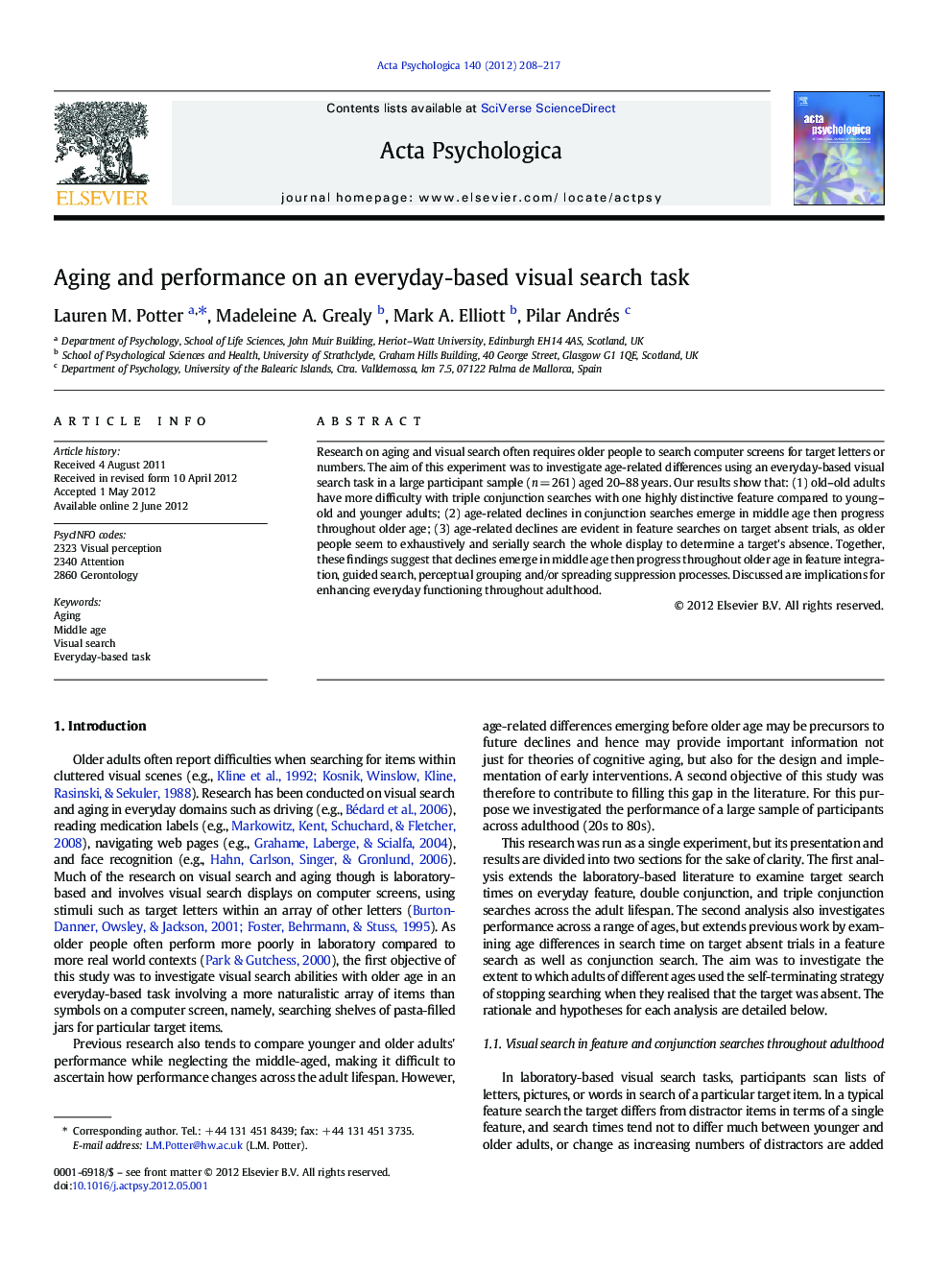| Article ID | Journal | Published Year | Pages | File Type |
|---|---|---|---|---|
| 919920 | Acta Psychologica | 2012 | 10 Pages |
Research on aging and visual search often requires older people to search computer screens for target letters or numbers. The aim of this experiment was to investigate age-related differences using an everyday-based visual search task in a large participant sample (n = 261) aged 20–88 years. Our results show that: (1) old–old adults have more difficulty with triple conjunction searches with one highly distinctive feature compared to young–old and younger adults; (2) age-related declines in conjunction searches emerge in middle age then progress throughout older age; (3) age-related declines are evident in feature searches on target absent trials, as older people seem to exhaustively and serially search the whole display to determine a target's absence. Together, these findings suggest that declines emerge in middle age then progress throughout older age in feature integration, guided search, perceptual grouping and/or spreading suppression processes. Discussed are implications for enhancing everyday functioning throughout adulthood.
